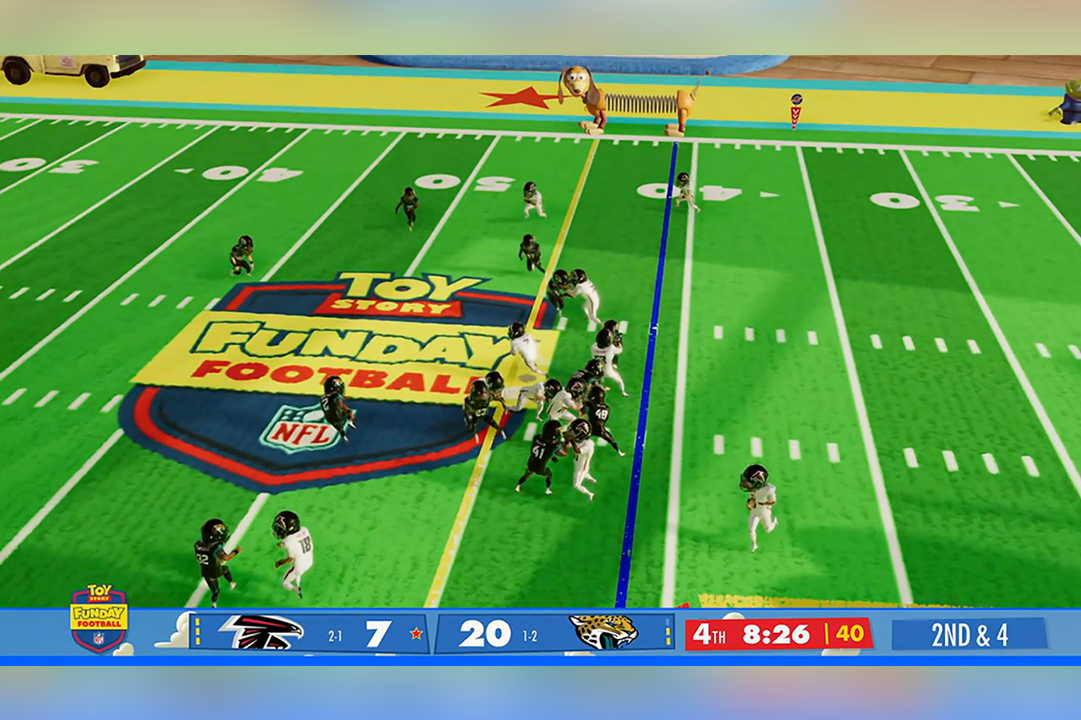Cutting Edge
Interview
Monitoring Earth from Space via Spresense and Thinking about the Global Environment
Oct 1, 2021

Top left: Manabu Kimura, Tokyo Laboratory 14, R&D Center, Sony Group Corporation / Top right: Masaharu Nagata, Tokyo Laboratory 14, R&D Center, Sony Group Corporation / Bottom left: Akihiro Horii, Tokyo Laboratory 14, R&D Center, Sony Group Corporation / Bottom right: Yoshinori Ota, Product Department 1, IoT Solutions Business Division, Sony Semiconductor Solutions Corporation
Sony Semiconductor Solutions Corporation develops and sells the Spresense™ single-board computer. This IoT-focused micro board will be utilized in space in an Earth monitoring project run by the Sony Group Corporation (“Sony”) R&D Center and Sony Semiconductor Solutions Corporation. There are also plans to use Spresense in a demonstration experiment under the Japan Aerospace Exploration Agency (JAXA) RAISE-2 Project as part of its Innovative Satellite Technology Demonstration Program sometime this year.
We spoke with project members about how Spresense is going to be used and what their vision for the future is.
Lowering the threshold of space by working with JAXA
──Can you tell us about why you signed up to use Spresense in the JAXA program?
Yoshinori Ota:We have had Spresense showcased at various events such as Maker Faire to make it known to many as an open platform and promote freedom of development. It was through such events that it caught JAXA’s attention. I think it was probably its low power consumption and the fact that the board manufacturing process makes it highly resistant to radiation that made it appear so promising for space applications.
JAXA is also aiming to increase their use of technologies and products made in Japan, so they invited us to apply to the Innovative Satellite Technology Demonstration Program. It was a very exciting proposal, but because we didn’t have substantial knowledge of space and the Spresense team is small, we were very concerned about whether we could actually make it happen.
While looking internally for team members that might be able to work on the RAISE-2 Project with us, I called on Akihiro Horii from Tokyo Laboratory 14, as we had worked together before, and his current department is now engaged in contributing to solving global environment and social challenges.

RAISE-2:RApid Innovative payload demonstration SatellitE-2 ©JAXA
Akihiro Horii:At Tokyo Laboratory 14 where I’m responsible, we study how to utilize Sony’s technologies to contribute to solving the global environmental problems that are currently being seen in various places today, with the members of Universe (“UNVS”) Project. For example, by placing advanced sensors in as many locations as possible around the world, we could collect data into the cloud and use it to find signs of problems in advance.
Acquiring and utilizing comprehensive data from space is effective in such sensing initiatives. Personally, I’ve been interested in space for a long time, and when Ota-san contacted me, I wanted to cooperate with him and started to think about what kind of experiment we could do with the RAISE-2 project with Kimura-san.
Manabu Kimura:Although Horii-san and I spent a great deal of time worrying over the details, the idea we came up with after much thought was “lowering the threshold of space.”
Until very recently, space has always seemed to be a very far off place but in the past ten years or so, space-related ventures have flourished, helping to erase that sense of distance and way of thinking. So, it was in this kind of situation that we proposed that JAXA and Sony work together in an endeavor to lower the threshold, or eliminate it, by making it possible to test and achieve ideas that come to mind easily.
Overcoming many challenges, including radiation, heat, and vibration, with the potential of Spresense
──What advantages does Spresense have as a single-board computer?
Ota:First of all, it delivers a high level of processing power with low power consumption, and can process images and audio. It supports playback and input of high-resolution audio, an ability which is used to detect possible failures in factory equipment.
Spresense is also an IoT-focused product, and we’re working hard to make it compatible with various LPWA formats. It also supports GPS and other global navigation satellite systems (GNSS) used around the globe, and which are also employed in this project.

Spresense single-board computer
──What kind of issues and challenges did you face in pursuing the new frontier of space?
Masaharu Nagata:To operate satellites in space, a number of hurdles must be overcome, such as radiation, shock, and heat. Outer space is constantly penetrated by high-energy radiation known as cosmic rays, and when their main component, the proton, strikes an object, it can result in errors known as single event effects (SEE). Protons are particles with a positive charge, which can potentially affect a board like Spresense in a number of ways, causing disturbances such as inverting 0 and 1 and causing through-current leaks which can burn and ruin elements.
With this in mind, we irradiated Spresense and measured what dose of radiation was required to trigger an error, and then estimated the number of errors that would occur when in orbit. The results showed that a memory error would only occur a few times a month in the satellite trajectory used in the RAISE-2 Project, and that a reboot each time an error occurred would likely allow for normal operation.
Because the Epsilon Launch Vehicle used for this launch is powered by solid fuel, it produces strong vibrations during launch and again when separating the satellite from the rocket. Spresense was subjected to tests of several hundred Gs and even greater shocks, and I personally was amazed that it was completely unharmed.
Finally, there is the problem of heat. Because outer space is a vacuum, there are no convection currents, so anything with an onboard heat source simply gets hotter. Using a fan doesn’t work because the fan itself is a heat source, making the object even hotter.
Kimura:Because there is no atmosphere in outer space, you can’t release heat via convection. I believe that recent high-performance processors would melt due to their own heat, but Spresense runs on low power consumption, meaning it produces a very small amount of heat, which is sufficiently managed solely by heat conduction via the four screws on the board.
Not only simply carrying out technical verification but we want to create opportunities for the next generation to learn
──How will you test Spresense in outer space in the RAISE-2 Project?
Nagata:Using the featured image processing technology and built-in GNSS on Spresense, we’re studying the fundamental technology for objectively observing Earth from space.
One aspect of this endeavor is an algorithm that accurately estimates the attitude of the satellite. In order to accurately monitor Earth, maintaining the intended attitude of the satellite is essential. In this project, we use three methods to estimate the attitude of the satellite.
The first method uses two SPR boxes equipped with Spresense boards on the satellite. One is facing Earth and the other is facing outward toward space. Star tracker technology is used for the satellite to estimate its own attitude by measuring the positional relation from imaged stars, which is carried out in the SPR box facing space.
The second method is utilization of GNSS. The SPR boxes are equipped with multiple GNSS antennas, and the phase difference of the GNSS signal is used to estimate the position and attitude.
The third method is estimation via inertial measurement unit (IMU), the method which drones use. IMU was achieved in joint research with JAXA.
The precision and real-time performance of each method differs, so by combining them, we’re aiming for even higher precision attitude estimation. The satellite’s attitude is also vital when adjusting the antenna in order to improve sensitivity for communications between the satellite and Earth.

SPR-BOX
Nagata:Also, one major advantage of Spresense is the ability to implement a star tracker at a comparatively low cost. Star trackers are generally imported, and very costly. We’re trying to deliver a star tracker in the tens of thousands of yen price range by utilizing Spresense. This is also part of our goal of lowering the threshold of space.
──What role does the Earth-facing SPR box play?
Nagata:We’re thinking of using this box to capture and record Earth with a camera, and then use the recorded data. In the project, the first thing I think we need to do is capture a lot of images and accumulate data on shooting conditions for imaging in space, such as exposure and white balance.
──Please tell us about the test schedule for the RAISE-2 Project, which is scheduled to launch in fiscal 2021.
Nagata:The plan is to conduct a one-year test, and for the first one to two months after launch, we’ll capture the basic images with a camera to obtain the data on the shooting conditions I just mentioned in order to build our knowledge base. During the following two to three months, the algorithms in development for the star tracker, etc., will be tested in orbit to improve their accuracy. For GNSS and IMU as well, we will continue monitoring the data and seeing just how much precision we can maintain in space.

Kimura:In the latter half of the test, we plan on preparing some educational content for children. Earlier we talked about lowering the threshold to space, and in the UNVS Project, in addition to lowering the technical threshold, we want to have as many people as possible utilize content from space, especially children who will grow up to build the future.
For example, I think it would be fantastic if elementary students could observe the Earth from space for their independent research assignments over summer break, and it’s interesting to think of how their imaginations could help create new space industries and elevate mankind.
I also want to give kids the opportunity to develop an interest in space and objectively view Earth, so they can realize what their home planet is like, which I think would help move them to take action in the future.
Aiming to benefit everyone with Sony’s technology
──Please tell us about your future plans.
Kimura:I believe this project is one that can benefit everyone—that is, customers, us as providers, and the Earth. It’s about skillfully using Sony’s technology to deliver value to the customer, Sony, and the planet we share. To make this a reality, we need to accumulate more skills and build our knowledge base about how to make the most of outer space through the RAISE-2 Project and then apply what we learn to the next step in the process.
Ota:This project is a major milestone for Spresense, and I think that by building a track record in outer space, it can help out our other businesses. Sony Semiconductor Solutions possesses advanced imaging and sensing technology, so we should also accelerate collaboration between such technologies.
Horii:Through this project, we would like people all over the world to know about our activities under the concept of “Sony x Space”. I would like to invite students who are considering joining the Sony group and experts in space engineering and physics who had little direct ties to the Sony group to participate. I look forward to creating a virtuous cycle that yields beneficial technologies by looking at and discussing things from multifaceted perspectives.




